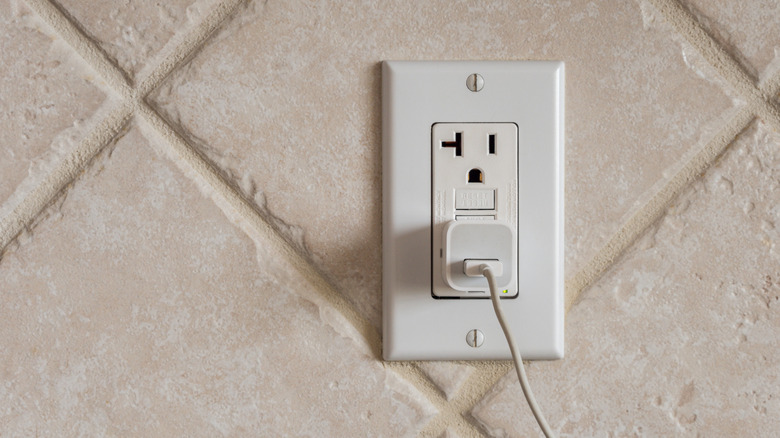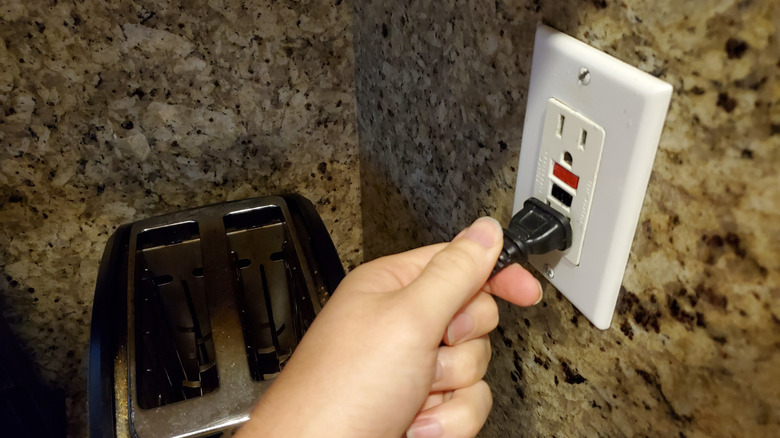Why Do Some Outlets Have A Reset Button?
The majority of electrical outlets in your home look more or less the same: two outlets, three holes in slightly different shapes to insert up to three prongs and deliver electricity. Some outlets might have slight variations, like a T-shaped hole, but they're otherwise identical. However, if you take a close look at the outlets around your home, you might notice a few of them have a distinct difference: a pair of buttons between the holes marked "TEST" and "RESET."
These buttons are only present on a special kind of outlet known as a ground-fault circuit interrupter, or GFCI for short. These outlets are designed to detect physical faults in your electrical wiring and swiftly cut the power in the event of a dangerous surge. If you noticed these buttons primarily on outlets in your bathroom, near sinks, or outdoors, that's no coincidence; GFCI outlets are your first and foremost defense against electrical shocks caused by splashes of water. The test and reset buttons are meant to provide an easy means of ensuring that the outlet's power-cutting prowess is in full-functioning order, so you know you're safe from the threat of potentially lethal electric shocks.
The test and reset buttons are for testing a GFCI outlet's ability to cut the power
The way a GFCI outlet typically works is by constantly monitoring for sudden, drastic surges in power, particularly caused by devices or sources plugged into the outlet itself. For example, if you had a sink full of water and accidentally dropped a hair dryer into it, the GFCI outlet it's plugged into would swiftly kill the power before any rampant sparks can start flying all over the place. This is also meant to protect you in case your electrical outlet gets wet. It's entirely possible that a fully functioning GFCI outlet could save you from death by electrocution someday.
Of course, a GFCI outlet can only do its job if it's fully functioning, which is why ensuring its efficacy is vital. Thus, we have the test and reset buttons, which are meant to simulate a power-cutting situation. To test a GFCI outlet, simply plug some manner of device into the outlet and press the test button. Ideally, the device should immediately stop functioning, and the reset button should pop slightly out of the outlet. This means that the GFCI outlet is working normally and is able to stop the flow of electricity if necessary. When you're done testing, simply press the reset button back in to restore normal functionality.
If you press the test button and the power keeps flowing, or the reset button doesn't pop out, that could mean there's a problem with the wiring in your GFCI outlet. In such a case, you should call an electrician right away to see what the problem is and get it fixed.

